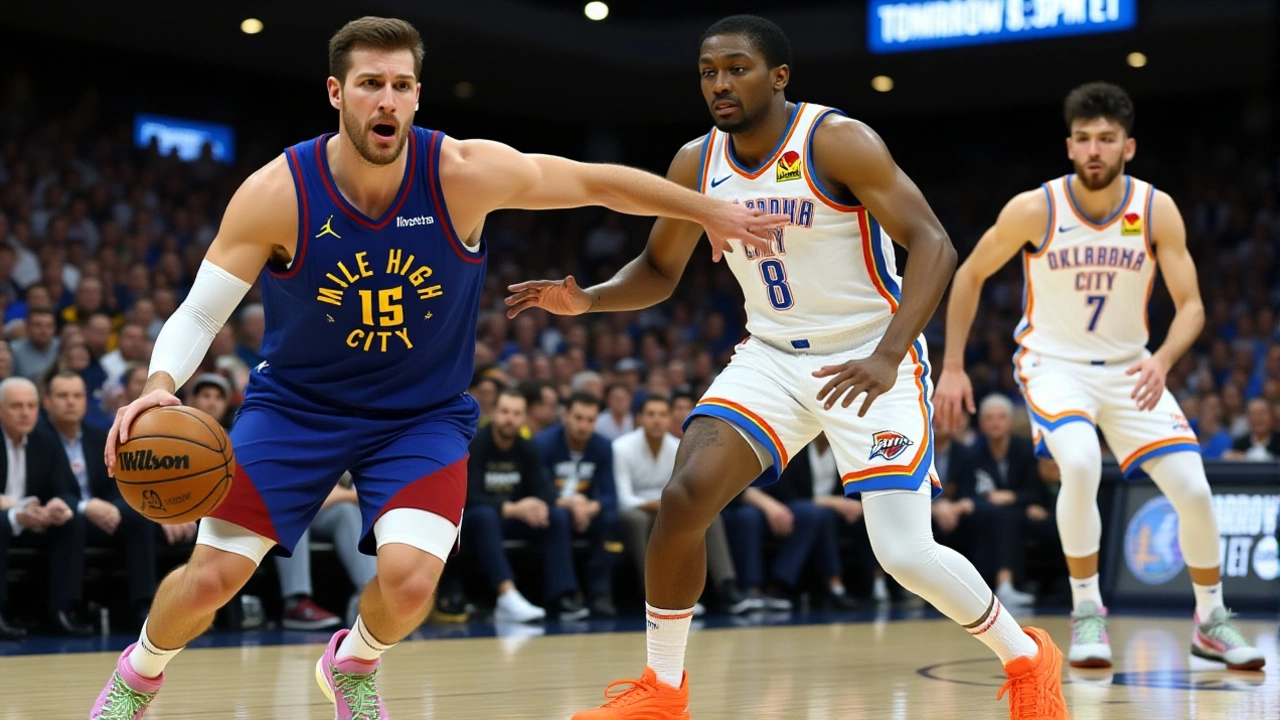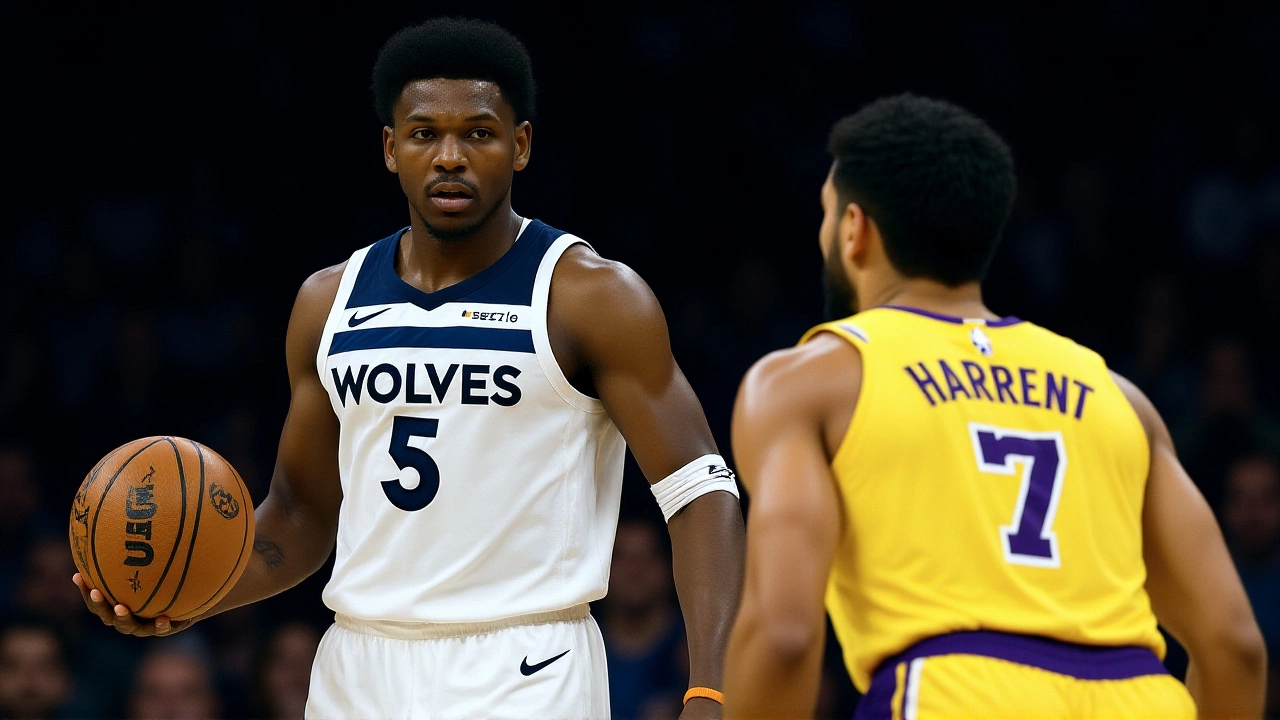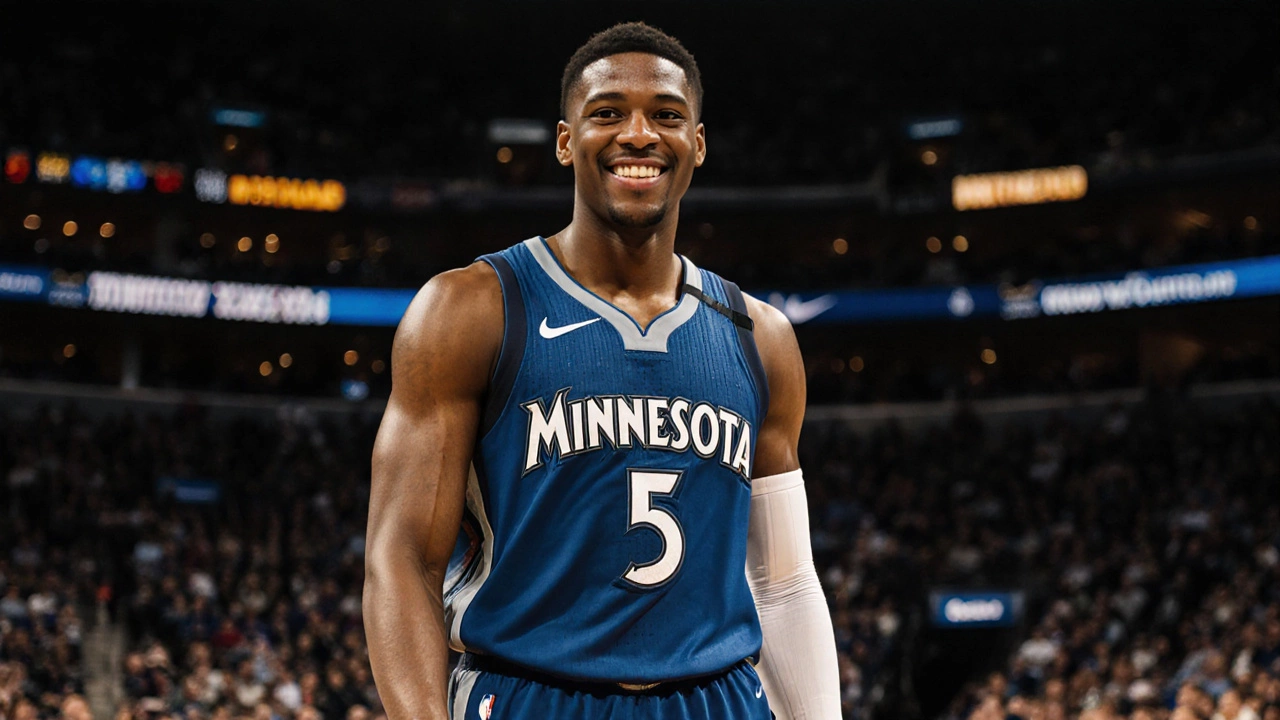When Anthony Edwards stepped off the court before tip-off against the Denver Nuggets on October 27, 2025, the Minnesota Timberwolves lost more than just their star guard—they lost their engine. The 23-year-old All-Star suffered a right hamstring strain during pregame warmups, forcing him to miss his first full game of the 2025 NBA season. The Nuggets, fully healthy and firing on all cylinders, capitalized with a 127-114 win, led by Jamal Murray’s explosive 42-point performance. But the real story isn’t the score. It’s what happens next for Minnesota without their most dynamic player.
Conflicting Timelines, Same Reality
Reports from insider Shams Charania suggested Edwards would be sidelined for at least two weeks. But other sources close to the team indicated a more optimistic one-week recovery window. The discrepancy isn’t just noise—it’s a sign of uncertainty. Hamstring injuries are notoriously tricky. A grade 1 strain might heal in days; a grade 2 can linger for weeks, especially in explosive athletes like Edwards who rely on sudden bursts of speed. The Timberwolves aren’t releasing official details, which is typical. But the fact that two credible streams are offering different timelines tells you this isn’t a simple tweak. It’s a real setback.Edwards has played every game this season until now—34 consecutive appearances. He’s averaging 25.4 points, 5.8 rebounds, and 4.9 assists. His absence doesn’t just hurt scoring; it disrupts the entire rhythm of Minnesota’s offense. When he drives, defenses collapse. That opens up Karl-Anthony Towns in the post and Jrue Holiday for catch-and-shoot opportunities. Without him, those lanes vanish.
The Night the Nuggets Broke Through
The game on October 27 wasn’t just a loss—it was a revelation. The Nuggets, who entered the night as the league’s best offensive team, looked like a well-oiled machine. Nikola Jokic posted 28 points and 12 assists, but it was Murray who stole the show. He attacked the rim with impunity, hit pull-ups from 25 feet, and even dished out six assists. No Timberwolves defender could match his intensity. Julius Randle tried to carry the load with 26 points, but he was double-teamed every time he touched the ball. Dante Exum, filling in at point guard, looked overwhelmed. The Timberwolves turned the ball over 18 times. They shot just 41% from the field. They were outrebounded by nine. It wasn’t just that they missed Edwards—it was that the whole system seemed to stall without him.
What This Means for Minnesota’s Season
The Timberwolves entered 2025 with championship aspirations. They traded for Holiday to add defense and leadership. They signed Randle to bolster the frontcourt. But their ceiling has always been tied to Edwards’ health. He’s their primary creator, their emotional spark, their closest thing to a closer. In the playoffs, where every possession matters, losing him for even a week could be catastrophic. The Western Conference is brutal. The Nuggets, Suns, Clippers, and Warriors are all legitimate threats. Minnesota can’t afford to fall behind in the standings.Here’s the twist: this might force the coaching staff to experiment. Could Dante Exum get more minutes? Will they lean harder on Towns as a playmaker? Is there a role for rookie wing Zaccharie Risacher? The answers aren’t clear. But one thing is: the clock is ticking. With 72 games left in the regular season, every missed game is a lost opportunity to build chemistry.

Historical Context: Hamstring Injuries in the NBA
This isn’t the first time a star guard has been derailed by a hamstring. In 2023, Devin Booker missed 11 games with a similar injury, and the Suns lost momentum in the playoff race. In 2021, Luka Dončić returned too soon after a hamstring strain and aggravated it—costing him the next three weeks. Teams often rush players back because of schedule pressure. But the smart ones? They wait. The Timberwolves’ medical staff will have to balance urgency with caution. A recurrence could cost Edwards the entire season.For now, Minnesota will have to survive on grit. Holiday can lock down opponents. Towns can score. Randle can bully smaller forwards. But none of them can replicate Edwards’ combination of speed, athleticism, and clutch gene. His return date remains uncertain. But if he’s back by November 10, that’s a win. If he’s not back by November 17, the pressure mounts.
Frequently Asked Questions
How long is Anthony Edwards expected to be out?
Reports vary between one and two weeks, with no official timeline from the Timberwolves. A grade 2 hamstring strain—likely what Edwards suffered—typically requires 10–14 days of rest before light activity, and another 7–10 days before full basketball activity. If the team is conservative, expect him back around November 10–17. Rushing him risks a setback.
Who steps up in Edwards’ absence?
Jrue Holiday will handle more playmaking, though he’s not a natural ball-dominant guard. Julius Randle will need to create his own shot more often, and Karl-Anthony Towns may be asked to initiate offense from the high post. Rookie Zaccharie Risacher could see increased minutes, but his inexperience makes him a risky option in high-leverage moments.
How did the Timberwolves perform without Edwards?
In their first game without Edwards on October 27, 2025, they lost 127-114 to the Nuggets. They shot 41% from the field, turned the ball over 18 times, and were outrebounded by nine. Their offensive rating dropped from 118.4 (with Edwards) to 102.1 without him—among the worst of the season.
Could this injury affect Edwards’ long-term career?
Not if managed properly. Hamstring injuries are common in the NBA, especially for explosive guards. Edwards has no prior history of major lower-body injuries. With proper rehab—eccentric strengthening, mobility work, and load management—he should return stronger. But if the team pushes him back too soon, it could lead to chronic issues or recurring strains, which have derailed careers like those of DeMar DeRozan and Russell Westbrook.
What’s the impact on Minnesota’s playoff chances?
The Timberwolves are currently in the top 6 in the West, but the gap between 6th and 10th is razor-thin. Losing Edwards for two weeks could cost them 2–3 wins, possibly dropping them out of the top 4. That means a tougher first-round matchup. With Denver, Phoenix, and Golden State all in contention, Minnesota can’t afford to stumble. His return timing might determine whether they’re a 3rd seed or a 6th seed.
Why didn’t the Timberwolves reveal the exact injury grade?
Teams rarely disclose injury grades publicly to avoid giving opponents a scouting advantage and to protect player privacy. Also, grades can be reassessed after MRI results and physical therapy evaluations. The one-to-two-week range suggests a moderate strain, but the team wants flexibility to adjust the timeline based on daily progress.
